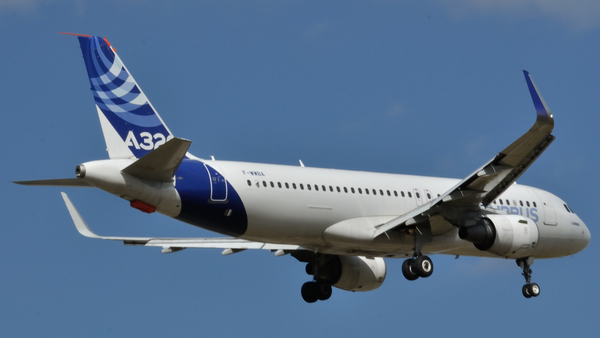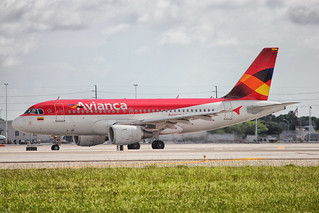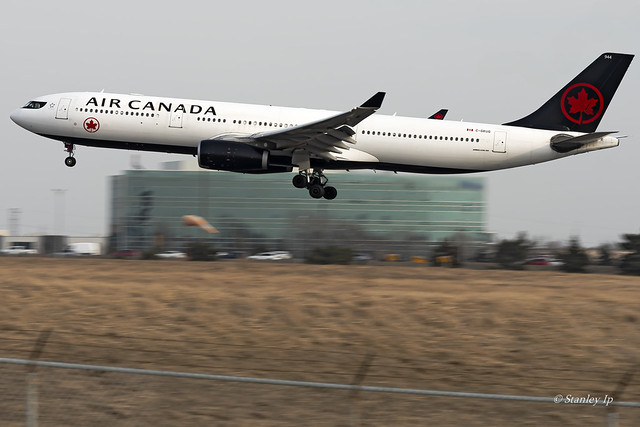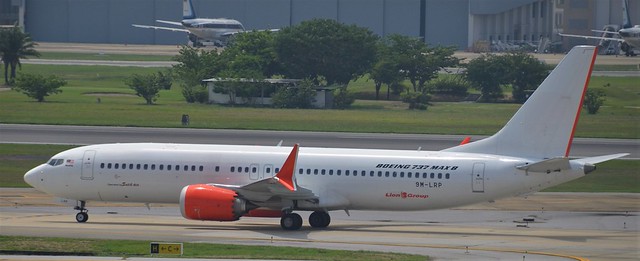Avianca A318 near Cali on Mar 27th 2018, GPWS alert and Alpha Floor
Last Update: April 30, 2020 / 20:05:17 GMT/Zulu time
Incident Facts
Date of incident
Mar 26, 2018
Classification
Incident
Airline
Avianca
Flight number
AV-9745
Departure
Bogota, Colombia
Destination
Cali, Colombia
Aircraft Registration
N596EL
Aircraft Type
Airbus A318
ICAO Type Designator
A318
Colombia's AIP rated the occurrence a serious incident and opened an investigation.
In preliminary information Colombia's AIP reported the captain acting as instructor for the first officer was pilot monitoring, the first officer undergoing line training was pilot flying. About 40nm ahead of the Cali VOR the crew received a GPWS alert "Terrain! Pull up!" while at 13,980 feet MSL, while the minimum safe altitude was 17,000 feet MSL. The crew initiated an evasive maneouver and climbed to 20,640 feet MSL, then continued the approach to Cali's runway 02 without another incident.
The recordings of the radar facility at Cali shows, that a minimum safe altitude alert activated at the controller's desk when the aircraft descended below 17,000 feet about 50.6nm ahead of Cali VOR. However, there was no warning transmitted to the aircraft by the controller. Radar contact with the aircraft was subsequently temporarily lost. The controller also did not notice that the aircraft subsequently climbed to 20640 feet.
Colombia's GRIAA released their final report in Spanish only (Editorial note: to serve the purpose of global prevention of the repeat of causes leading to an occurrence an additional timely release of all occurrence reports in the only world spanning aviation language English would be necessary, a Spanish only release does not achieve this purpose as set by ICAO annex 13 and just forces many aviators to waste much more time and effort each in trying to understand the circumstances leading to the occurrence. Aviators operating internationally are required to read/speak English besides their local language, investigators need to be able to read/write/speak English to communicate with their counterparts all around the globe).
The report concludes the probable causes of the serious incident were:
Loss of situational awareness by the crew when erroneously programming a descent altitude limit of the MANGA8 arrival procedure without noticing their error and thus descending below MSA into mountaineous terrain until the GPWS activated with "PULL UP, TERRAIN!" warning.
Lack of monitoring of the first officer (pilot flying) by the training captain (pilot monitoring). The first officer, due to his little experience and being under training, should have been under strict control and feedback (CRM).
Failure of cockpit communication, there was no feedback on the procedures of the flight demonstrating high levels of complacency towards the first officer, who was in his initial operations training.
Contributing factors were:
- Failure of radar surveillance by Cali Approach Control, who did not detect and therefore did not warn the aircraft N596EL about its descent below MSA and below the altitudes required in MANGA8 standard arrival route.
- Lack of general as well as team experience by the first officer who acted as pilot flying.
The GRIAA reported the captain (51, ATPL, 14,000 hours total) was pilot monitoring as well as training captain supervising the first officer. The first officer (22, CPL, 235 hours total) was pilot flying on line training under supervision.
The crew was assigned the MANGA8 standard arrival procedure while descending towards Cali. The aircraft was descending through about 13980 feet MSL about 40.5nm northeast of Cali VOR, between OREGA and MANGA8 waypoint, already below MSA of 17,000 feet when the GPWS activate issuing an alert. The crew immediately initiate an evasive maneouver climbing to 20640 feet, which exceeded their cleared altitude.
Cali Approach has a radar system which a visual and aural warning system to prevent terrain closures, however the system was down due to configuration problems.
Nonetheless a visual alert was created on the ATC desk when the aircraft descended below the MSA of airways R564, the controller however did not radio the aircraft. The evasive maneouver was also not reported by the crew.
The transponder signal including Mode C of the aircraft was lost at 38.5nm before Cali VOR, shortly before the aircraft descended through 14,000 feet MSL. The transponder signals were picked up again when the aircraft climbed through FL194.
The aircraft resumed the approach via MANGA8 approach procedure and landed on Cali's runway 02 without further incident.
The GRIAA analysed the first officer had accumulated 35 flight hours on the A318. He programmed 14,000 feet into the FMS for MANGA8 standard arrival route when the MSA was 17,000 feet. CRM was lacking as there was no feedback from the captain or any confirmation of the setting before executing the descent.
The air traffic controller had low workload, N596EL was the only aircraft under his control. The controller clearly failed to notice the visual warning on his desk and did not radio the crew of N596EL as result.
Both crew lost situational awareness. The first officer programmed the FMS to descend to 14,000 feet when the minimum safe altitue was 17,000 feet. The captain did not notice this situation until the GPWS activated, took control of the aircraft and performed a sharp climb ending at an unapproved altitude. There had been lack of assertive communication between the pilots resulting in the lack of verification of the FMS altitude after the FMS was porgrammed.
The reaction of the captain to the GPWS was correct and quick, thus managing according to the TEM (Threat Error Management) model resulting in a maneouver that prevented controlled flight into terrain.
Incident Facts
Date of incident
Mar 26, 2018
Classification
Incident
Airline
Avianca
Flight number
AV-9745
Departure
Bogota, Colombia
Destination
Cali, Colombia
Aircraft Registration
N596EL
Aircraft Type
Airbus A318
ICAO Type Designator
A318
This article is published under license from Avherald.com. © of text by Avherald.com.
Article source
You can read 1 more free article without a subscription.
Subscribe now and continue reading without any limits!
Read unlimited articles and receive our daily update briefing. Gain better insights into what is happening in commercial aviation safety.
Send tip
Support AeroInside by sending a small tip amount.
Related articles
Avianca A320 at Popayan on Nov 10th 2025, bird strike
An Avianca Airbus A320-200, registration HK-5320 performing flight AV-4892 from Popayan to Bogota (Colombia), was climbing out of Popayan's runway 26…
Avianca A320 at Cartagena on May 3rd 2025, landed below minimum fuel
An Avianca Airbus A320-200, registration HK-5407 performing flight AV-9206 from Medellin to Santa Marta (Colombia), was on approach to Santa Marta…
Avianca A319 near Houston on Jun 9th 2025, loss of cabin pressure
An Avianca Airbus A319-100, registration N422AV performing flight AV-189 from Dallas Ft. Worth,TX (USA) to Bogota (Colombia), was enroute at FL370…
Avianca B788 near Madrid on Apr 23rd 2025, engine problem
An Avianca Boeing 787-8, registration N795AV performing flight AV-17 from Madrid,SP (Spain) to Medellin (Colombia), was climbing out of Madrid when…
Avianca A320 at Valledupar on Mar 6th 2025, rejected takeoff due to engine problem
An Avianca Airbus A320-200, registration N755AV performing flight AV-9317 from Valledupar to Bogota (Colombia), had backtracked runway 02, turned…
Newest articles
Canada A333 near Winnipeg on Oct 19th 2025, smoke from standby compass
An Air Canada Airbus A330-300, registration C-GKUG performing flight AC-327 from Montreal,QC to Calgary,AB (Canada) with 285 people on board, was…
Batik Malaysia B38M at Melbourne on Nov 25th 2025, engine failure
A Batik Air Malaysia Boeing 737-8 MAX, registration 9M-LRP performing flight OD-178 from Melbourne,VI (Australia) to Denpasar (Indonesia), was…
Subscribe today
Are you researching aviation incidents? Get access to AeroInside Insights, unlimited read access and receive the daily newsletter.
Pick your plan and subscribePartner

ELITE Simulation Solutions is a leading global provider of Flight Simulation Training Devices, IFR training software as well as flight controls and related services. Find out more.
SafetyScan Pro provides streamlined access to thousands of aviation accident reports. Tailored for your safety management efforts. Book your demo today
AeroInside Blog
Popular aircraft
Airbus A320Boeing 737-800
Boeing 737-800 MAX
Popular airlines
American AirlinesUnited
Delta
Air Canada
Lufthansa
British Airways





